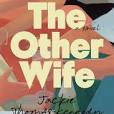Title: Progress and Challenges: The Fight for Lesbian Rights
Introduction:
Lesbian rights have been a prominent aspect of the broader struggle for LGBTQ+ equality. Over the years, significant progress has been made in recognizing and protecting the rights of lesbian individuals, but challenges persist. This article explores the advancements, ongoing struggles, and the importance of continuing to advocate for lesbian rights.
Historical Context:
Lesbians have long faced societal discrimination and marginalization due to their sexual orientation. Throughout history, their relationships were often stigmatized or dismissed altogether. However, in recent decades, societies around the world have witnessed a gradual shift towards greater acceptance and recognition of lesbian identities.
Legal Progress:
Many countries have taken significant steps forward in legalizing same-sex relationships and granting equal rights to LGBTQ+ individuals. Marriage equality has become a reality in numerous nations, allowing lesbian couples to enjoy the same legal benefits and protections as heterosexual couples. Additionally, anti-discrimination laws have been enacted to safeguard lesbians from prejudice in various areas such as employment, housing, and public accommodations.
Visibility and Representation:
Increased visibility of lesbian individuals in media, politics, and other realms has played a crucial role in challenging stereotypes and fostering acceptance. Representations of strong lesbian characters in popular culture have helped break down barriers and promote understanding among wider audiences. The presence of openly lesbian politicians also serves as an inspiration for aspiring leaders within the community.
Challenges Faced:
Despite significant advancements, lesbians still face unique challenges that require attention and action. Discrimination persists on both individual and systemic levels. Hate crimes targeting lesbians continue to occur globally, highlighting the need for increased protection against violence based on sexual orientation. Additionally, access to healthcare services specific to lesbian needs remains limited or inadequate in many regions.
Intersectionality:
It is essential to recognize that lesbian experiences intersect with other aspects of identity such as race, ethnicity, socioeconomic status, disability status, or immigration status. Intersectional discrimination can compound the challenges faced by lesbian individuals, making it crucial to address these intersecting forms of oppression and advocate for justice and equality for all.
Continuing the Fight:
To secure full equality for lesbians, ongoing advocacy is vital. This involves supporting organizations that champion lesbian rights, engaging in public discourse, and challenging discriminatory practices whenever they arise. Education and awareness campaigns are also crucial to promote understanding and counter stereotypes.
Conclusion:
The fight for lesbian rights has come a long way, with significant legal progress and increased visibility. However, challenges remain, including discrimination, violence, and limited access to resources. By continuing to advocate for lesbian rights and fostering inclusivity in all aspects of society, we can work towards a future where lesbians are fully recognized, respected, and protected. Let us stand together in solidarity to ensure that every individual can live authentically and with dignity regardless of their sexual orientation.
Frequently Asked Questions: Lesbian Rights and LGBTQ+
- What is the introduction to Lgbtq?
- Who is the executive director of the National Center for Lesbian Rights?
- What did the daughters of Bilitis do?
- What is the cause of Lgbtqi?
What is the introduction to Lgbtq?
Introduction to LGBTQ+: Celebrating Diversity and Advocating for Equality
The LGBTQ+ community represents a vibrant and diverse group of individuals who identify as lesbian, gay, bisexual, transgender, queer/questioning, and more. This acronym serves as an inclusive umbrella term that encompasses a wide range of sexual orientations and gender identities. Understanding the significance of LGBTQ+ is crucial in fostering acceptance, promoting equality, and creating a more inclusive society.
Historical Context:
Throughout history, LGBTQ+ individuals have faced various forms of discrimination, prejudice, and marginalization due to societal norms and misconceptions surrounding their identities. However, the struggle for LGBTQ+ rights has gained significant momentum over the years through collective activism and advocacy.
Sexual Orientations:
The “L,” “G,” “B,” and “Q” in the acronym represent different sexual orientations. Lesbians are women who are attracted romantically or sexually to other women. Gay individuals are men who are attracted romantically or sexually to other men. Bisexual individuals experience attraction to both genders. The term “queer” is an inclusive umbrella term used by those whose sexual orientation does not conform to traditional labels or who reject labels altogether.
Gender Identities:
The “T” in LGBTQ+ stands for transgender. Transgender individuals have a gender identity that does not align with the sex assigned to them at birth. They may transition socially or medically to live authentically as their true gender. Additionally, the “+” symbolizes the inclusion of other diverse gender identities such as non-binary (not exclusively male or female), genderqueer (identifying outside traditional gender norms), and more.
Challenges Faced:
LGBTQ+ individuals often encounter unique challenges related to discrimination, prejudice, social stigma, and unequal treatment in various aspects of life. These challenges can manifest in areas such as employment opportunities, healthcare access, housing rights, family acceptance, and legal recognition of relationships.
Progress and Achievements:
Despite the challenges, significant progress has been made in advancing LGBTQ+ rights globally. Many countries have decriminalized same-sex relationships, legalized same-sex marriage, and enacted anti-discrimination laws to protect LGBTQ+ individuals. Visibility and representation of LGBTQ+ individuals in media, politics, and other fields have also increased, contributing to greater acceptance and understanding.
Continuing the Journey:
While progress has been made, there is still work to be done. The fight for LGBTQ+ equality involves ongoing efforts to challenge discriminatory practices, promote education and awareness, advocate for inclusive policies, and support organizations working towards equality. It is crucial to create safe spaces that celebrate diversity and foster acceptance for all individuals regardless of their sexual orientation or gender identity.
Conclusion:
The LGBTQ+ community is a vibrant tapestry of diverse identities that deserve recognition, respect, and equal rights. Understanding the significance of LGBTQ+ is an essential step towards creating a more inclusive society that values diversity. By embracing acceptance, celebrating differences, and advocating for equality, we can collectively contribute to a world where every person can live authentically and with dignity regardless of their sexual orientation or gender identity.
Who is the executive director of the National Center for Lesbian Rights?
As of my knowledge up until September 2021, the executive director of the National Center for Lesbian Rights (NCLR) is Imani Rupert-Gordon. Please note that leadership positions can change, so it’s always a good idea to verify the current executive director through official sources.
What did the daughters of Bilitis do?
The Daughters of Bilitis (DOB) was the first lesbian civil and political rights organization in the United States. Founded in San Francisco in 1955, its primary goal was to provide a safe and supportive community for lesbian women at a time when homosexuality was highly stigmatized and illegal.
The main objectives of the Daughters of Bilitis were:
- Social Support: DOB aimed to create a space where lesbian women could meet, socialize, and form connections with others who shared similar experiences. The organization organized social events, discussion groups, and gatherings where members could freely express themselves without fear of judgment or discrimination.
- Education and Awareness: Recognizing the importance of education in combating prejudice, DOB published a magazine called “The Ladder” from 1956 to 1972. It served as a platform for sharing personal stories, discussing issues relevant to lesbians, providing resources for self-acceptance, and challenging societal misconceptions about homosexuality.
- Legal Advocacy: The Daughters of Bilitis worked towards legal reform by striving to change discriminatory laws that criminalized homosexual behavior. They sought to challenge oppressive legislation through lobbying efforts and public awareness campaigns.
- Empowerment: DOB aimed to empower lesbian women by fostering self-acceptance and self-worth. They provided support groups and counseling services that helped individuals navigate their own journeys towards self-acceptance in a society that often marginalized them.
The Daughters of Bilitis played a significant role in advancing LGBTQ+ rights during an era when open discussions about homosexuality were rare. Their work laid the foundation for future LGBTQ+ organizations and contributed to the growing visibility and acceptance of lesbian women within society.
What is the cause of Lgbtqi?
The cause of LGBTQ+ (Lesbian, Gay, Bisexual, Transgender, Queer/Questioning, and Intersex) rights is rooted in the pursuit of equality, acceptance, and justice for individuals who identify as LGBTQ+. The primary goal is to ensure that all people, regardless of their sexual orientation or gender identity, are treated with respect and afforded the same rights and opportunities as everyone else.
The LGBTQ+ movement advocates for various causes:
- Ending Discrimination: The movement seeks to eradicate discrimination based on sexual orientation or gender identity in areas such as employment, housing, healthcare, education, and public services. It aims to create a society where LGBTQ+ individuals can live free from prejudice and enjoy equal opportunities.
- Legal Recognition: Activists work towards legal recognition of same-sex relationships through marriage equality or civil unions. They also advocate for legal protections against discrimination based on sexual orientation or gender identity.
- Health and Well-being: The movement advocates for access to comprehensive healthcare services that are inclusive of LGBTQ+ individuals’ specific needs. This includes mental health support, HIV/AIDS prevention and treatment programs, transgender healthcare access, and support for intersex individuals.
- Education and Awareness: Promoting education about sexual orientation and gender identity helps dispel stereotypes, reduce stigma, and foster understanding among the general population. It aims to create safe spaces within educational institutions that are supportive of LGBTQ+ students.
- Transgender Rights: The movement works towards securing legal recognition of gender identity for transgender individuals. It advocates for access to appropriate healthcare services (including hormone therapy and gender-affirming surgeries), protection against discrimination in areas such as employment or housing, as well as creating inclusive environments that respect gender diversity.
- Intersectionality: Recognizing the intersecting identities within the LGBTQ+ community is crucial to address the unique challenges faced by individuals who experience multiple forms of discrimination due to their race, ethnicity, socioeconomic status, disability, or immigration status. The movement seeks to ensure that the rights and needs of all LGBTQ+ individuals are addressed.
Overall, the cause of LGBTQ+ rights is driven by the belief in equality, dignity, and respect for all individuals, regardless of their sexual orientation or gender identity. It aims to build a society where LGBTQ+ individuals can live authentically and without fear of discrimination or marginalization.




Leave a Reply